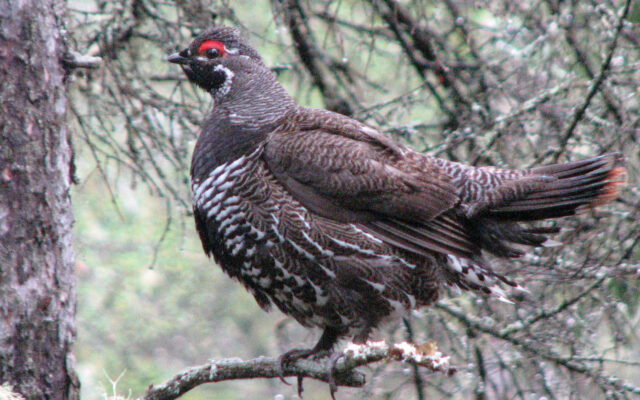
Here’s what I learned spending thousands of hours in the Maine woods
By Bob Duchesne
It’s finally finished. The last surveys of the Maine Bird Atlas were accomplished on March 15 the deadline for completion.
To recap, the Maine Bird Atlas has been a five-year project to map bird populations across the state, supervised by the Maine Department of Inland Fisheries and Wildlife. The goal is to create a baseline of species distribution, so that when the survey is repeated in 20-30 years, environmental changes become more easily apparent.
Birds are picky about habitat. When they shift location, it’s a strong signal of landscape changes. Such shifts could be triggered by things like climate change, land development, shifts in industrial forest use, the spread of solar and wind power, and widespread use of persistent chemicals.
Besides climate change, the landscape differences we’re already seeing as compared with the last survey 30 years ago were likely triggered by shifting land use patterns in agriculture and forestry, spruce budworm recovery, water quality improvements under the Clean Water Act, improved conservation efforts, and a host of other things we may figure out as the new data is crunched.
Five years of summer breeding surveys concluded last August. Winter surveys finished this week, because after this week, too many non-winter migrants begin to return.
But never mind all that. Regardless of what the scientists eventually figure out from the seven million bird records submitted by volunteers, I’ve been forced to adjust my own thinking. Five years of counting birds in the woods was a real eye-opener.
There are some summer birds that I previously thought were scarce. Then I started tripping over them everywhere I went, from Jackman to the Allagash. I saw indigo buntings and black-billed cuckoos in places I never would have predicted. Mourning warblers are secretive and hard to find. But in some remote corners of the woods, they were astonishingly abundant and noisy.
Surveying for thousands of hours changed my view of the forest. Previously, I looked at the forest as a collection of trees and birds. By the end, I looked at the forest as a community — and I was part of it.
I noticed how different bird species interacted with each other, and with me. Forest creatures understand each other in ways I hadn’t appreciated. They may speak different languages, but they share a common understanding of calls and alarms.
For instance, chickadees are usually the first to raise a commotion if they suspect trouble. Other critters may investigate, and downy woodpeckers are frequently the first to arrive. They don’t join the ruckus. They just look and go back to feeding.
By the fifth summer of atlas surveys, I could tell where birds were in their nesting cycles by observing how their behaviors changed. They were boisterous while courting, secretive while incubating, cautious while feeding nestlings, and chatty once the fledglings left the nest.
Winter surveys were equally educational. I always looked at the forest as static in winter. Migrants left. Finches visited. Year-round resident birds stayed. This winter taught me just how wrong I was.
Crows and blue jays almost totally abandon the forest, crowding in toward civilization where there is more food. If I see a crow or jay in the woods in winter, it’s invariably near people.
Many black-capped chickadees flee the woods in lean years. Red-breasted nuthatches are even more likely to do it. This year, most nuthatches either went south or to the coast. Whenever I’ve written that nuthatches are scarce up north, I’ve heard from loyal readers that the birds are mobbing feeders in Waldo, Hancock, and Washington counties.
Pine siskins were abundant across the north last winter. But this winter, they are almost totally absent. They, too, are hitting coastal feeders hard. Likewise, red crossbills didn’t find much food in the red spruces up north but found plenty among the coastal spruces. White-winged crossbills gravitate toward black spruces. They were nowhere to be found in the north this winter but made spotty appearances along the coast.
I also learned non-birdy things. Politicians may debate whether climate change is real, but mud season once again came weeks early to the north woods. I did my last survey March 13 on the Golden Road, just a few miles from the Quebec border, wearing only a sweater. The drive home was a slow, slushy slog. The only relief was that most of the logging trucks stopped running after midmorning, in hopes that nighttime temperatures would firm up some of the mud.
The birds are trying to tell us something. For the last five years, I listened.